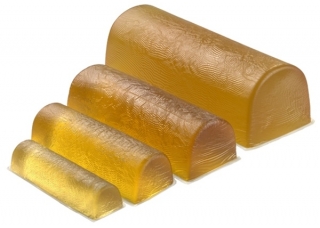Surgical pressure sores occur on a patient during a surgery when there is insufficient blood flow to skin tissue. This lack of blood flow is caused by the pressure of the patient’s own weight while lying on a surface. It is crucial for for the patients safety that proper measures are taken to allow for blood flow to skin tissue while a patient is in surgery. The two most common factors related to the potential for pressure sore injuries is the age of the patient and the length of time the patient is on the operating room table.
While most OR tables are equipped with foam table pads, these seemingly soft surfaces are not enough to prevent pressure sores from forming. It is essential that viscoelastic polymer gels be used to reduce the pressure especially in areas of the body that are more prone to sores.
The development of pressure ulcers is more common in bony prominences of the body. Depending on the position of the patient during the surgical procedure the bony prominences will be in different areas of the body. Some common areas of concern are the heels and elbows when a patient is lying on their back during a procedure. Fortunately pressure relieving gel manufacturers have designed products for the prone areas to aid in the prevention of sores.
Making use of other techniques to reduce pressure sores, such as repositioning the patient cannot always be done which is why it is crucial to have the appropriate pressure reducing surface in place. The American National Pressure Ulcer Advisory Panel (NPUAP) has an excellent quick reference guide [ www.npuap.org/Final_Quick_Prevention_for_web_2010.pdf ] that outlines in detail how to prevent pressure sores from forming, not only in the operating room but also in other areas of medical care.
Pressure sores can be prevented in the operating room as long as nurses and doctors in assess a patients risks properly, prior to the procedure. The use of pressure relieving gel will help medical staff properly prepare their patients for long surgical procedures where a patient is most at risk. Understanding how pressure sores form and how they can be prevented is the only way those working in operating rooms will be able to stop this never event from happening.

Leave a Reply